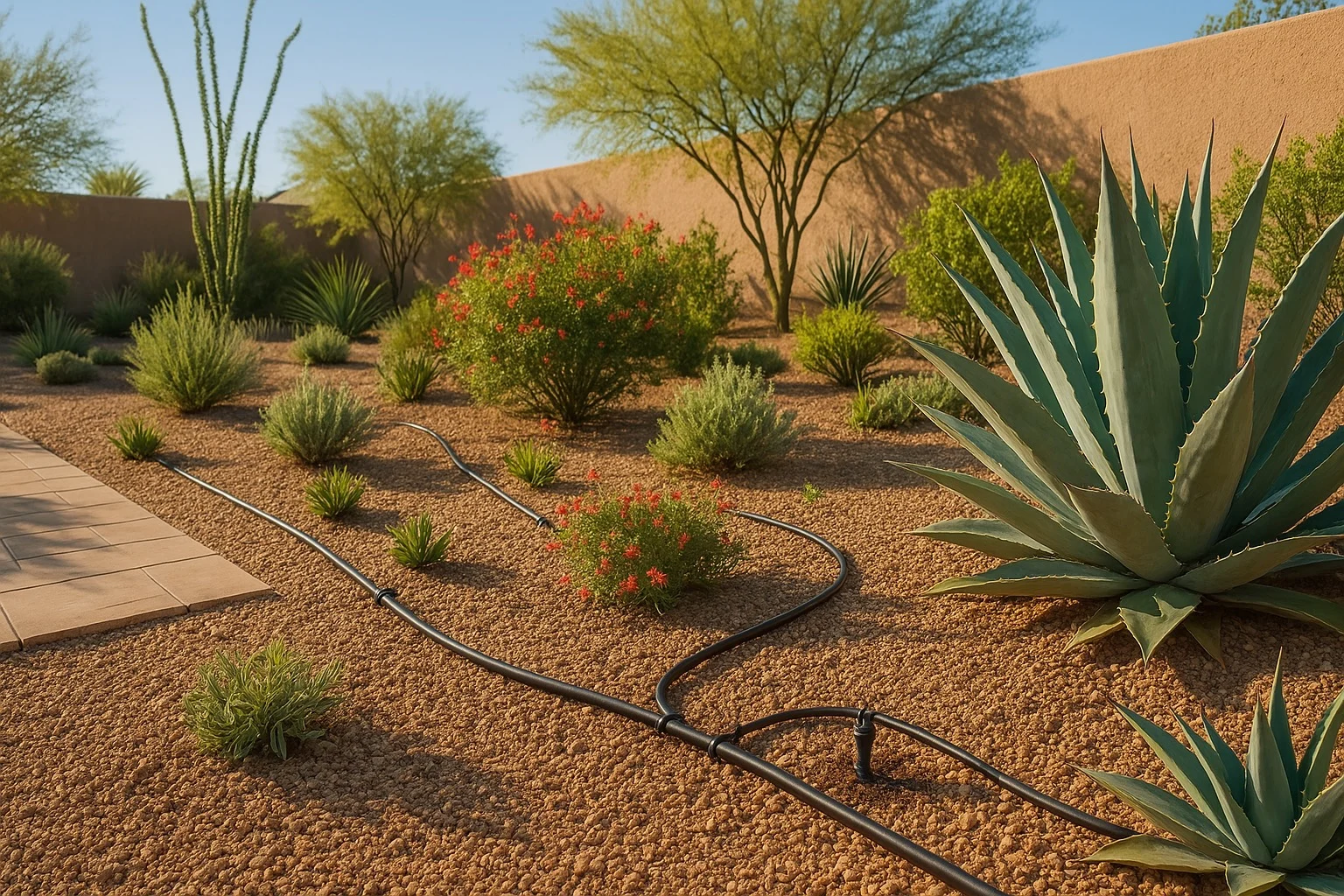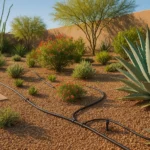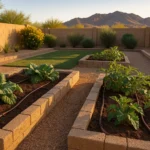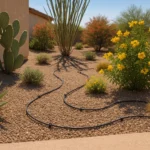Drip irrigation is a game-changer for keeping Gilbert landscapes thriving while using water wisely. By delivering water directly to plant roots, drip systems eliminate waste and promote healthier growth. Whether you’re new to drip or looking to fine-tune your setup, these pro tips will help you get the most out of every drop.

Start with Thorough Planning
The key to an effective drip irrigation system lies in careful planning. Begin by mapping out your landscape, noting the location and water needs of each plant type. Consider factors like soil composition, sun exposure, and plant maturity. This information will guide your decisions on emitter placement and flow rates.
When planning, also think about future growth. While it’s tempting to space emitters based on a plant’s current size, remember that as it matures, its root zone will expand. Place emitters strategically to accommodate a couple seasons of growth to avoid having to constantly readjust.
Investing time upfront to properly design your drip layout pays off in better performance and easier maintenance down the line. Sketch your plan on paper or use landscape design software to visualize and refine it before installation begins.
Choose High-Quality Components
Not all drip irrigation products are created equal. Opting for cheaply made, low-quality components often leads to frustrating issues like clogging, leaking, and inconsistent output. In the long run, skimping on parts will cost you more in wasted water, plant losses, and frequent repairs.
Instead, choose professional-grade components from reputable manufacturers. Look for features like built-in filters, pressure-compensating emitters, and UV-resistant tubing. While the initial cost may be higher, investing in durable, precision parts ensures reliable performance and a longer lifespan for your system.
High-quality components are especially crucial in Gilbert, where hard water and intense sunlight can be tough on irrigation systems. Parts designed to withstand these challenges will save you headaches and help your drip system operate at peak efficiency.
Calibrate Your Watering Schedule
One of the biggest advantages of drip irrigation is the ability to precisely control watering. But to reap the benefits, you need to dial in your schedule based on plants’ changing needs throughout the year. Overwatering is just as detrimental as underwatering, so finding the sweet spot is key.
Start by setting your timer to water deeply but infrequently. Deep watering promotes extensive root development, while allowing soil to dry between cycles prevents waterlogging and fungal issues. As a general rule, most established plants do well with watering 2-3 times per week during the hot summer months.
Keep a close eye on your plants and make adjustments as needed. Signs of overwatering include yellowing leaves, limp or rotting stems, and fungal growth. Underwatered plants will wilt, drop leaves, and show crispy brown edges. Use these indicators along with weather conditions to fine-tune your frequency and duration until plants are thriving.
Regularly Inspect and Maintain
Even the best drip irrigation systems require ongoing maintenance to keep them working smoothly. Set aside time at least monthly to give your system a thorough checkup and address any issues promptly.
Walk the entire layout, checking for signs of leaks, clogs, or damage. Inspect emitters to ensure they’re flowing freely and haven’t become blocked by dirt or debris. Look for kinked, cracked, or chewed tubing and repair or replace damaged sections.
Flush the system periodically to clear out any built-up sediment that can impede flow over time. Simply remove the end caps and let water run freely for a few minutes. This is especially important in Gilbert, where mineral-rich water can cause calcification.
Expand and Adapt as Needed
As your landscape matures and your plants’ needs evolve, don’t be afraid to modify your drip irrigation setup. Adding or relocating emitters, adjusting flow rates, or even automating with smart controllers can help you continue to optimize your system’s performance.
When adding new plants, take the opportunity to reassess your layout and make strategic updates. You may find that converting sections from overhead spray to drip, like in this article on smart sprinkler moves for Gilbert’s dry mornings, can provide better coverage and efficiency.
Staying flexible and proactively adapting your drip irrigation system allows you to be responsive to your landscape’s changing needs. With attention and tweaks over time, you can keep your drip setup working hard for your Gilbert yard season after season.




